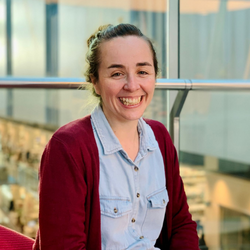Research
The Rayon's lab overall aim at the Babraham Institute in Cambridge is to investigate the molecular and metabolic pathways that control biological timing and lifespan. We make use of comparative human and mouse stem cell models as well as embryos to search for the regulatory mechanisms that determine species-specific timing.
Our current research questions are:
1. What is the role of protein turnover in developmental timing and lifespan?
2. How does the genetic basis of tempo control work?
3. Can we modulate developmental timing and extend lifespan?
The lab employs genetic and pharmacological manipulations and quantitative and temporally resolved techniques such as flow cytometry, imaging, and genome-wide approaches to investigate the molecular and metabolic mechanisms that regulate biological timing.
Overall, the identification of physiological mechanisms that modulate timing and its translation to stem cell models may have important implications in the field of human assisted reproduction, regenerative medicine, and aging. Changing the pace of developmental processes may facilitate the generation of clinically relevant cell types faster or it may allow lifespan extension.
Publications
1) T. Rayon (2023). Cell time: How cells control developmental timetables. Science Advances 9 (10): eadh1849. Corresponding author.
2) T. Rayon*, D. Stamataki‡, R. Perez-Carrasco, ‡ L. Garcia-Perez, C. Barrington, M. Melchionda, K. Exelby, J. Lazaro, V. Tybulewicz, E. M. C. Fisher, J. Briscoe*, Species-specific developmental timing is associated with global differences in protein stability in mouse and human. Science 369, eaba7667 (2020). *co-corresponding author, ‡equal contribution.
3) T. Rayon, R. J. Maizels, C. Barrington and J. Briscoe (2021). Single cell transcriptome profiling of the human developing spinal cord reveals a conserved genetic programme with human specific features. Development; dev.199711.


